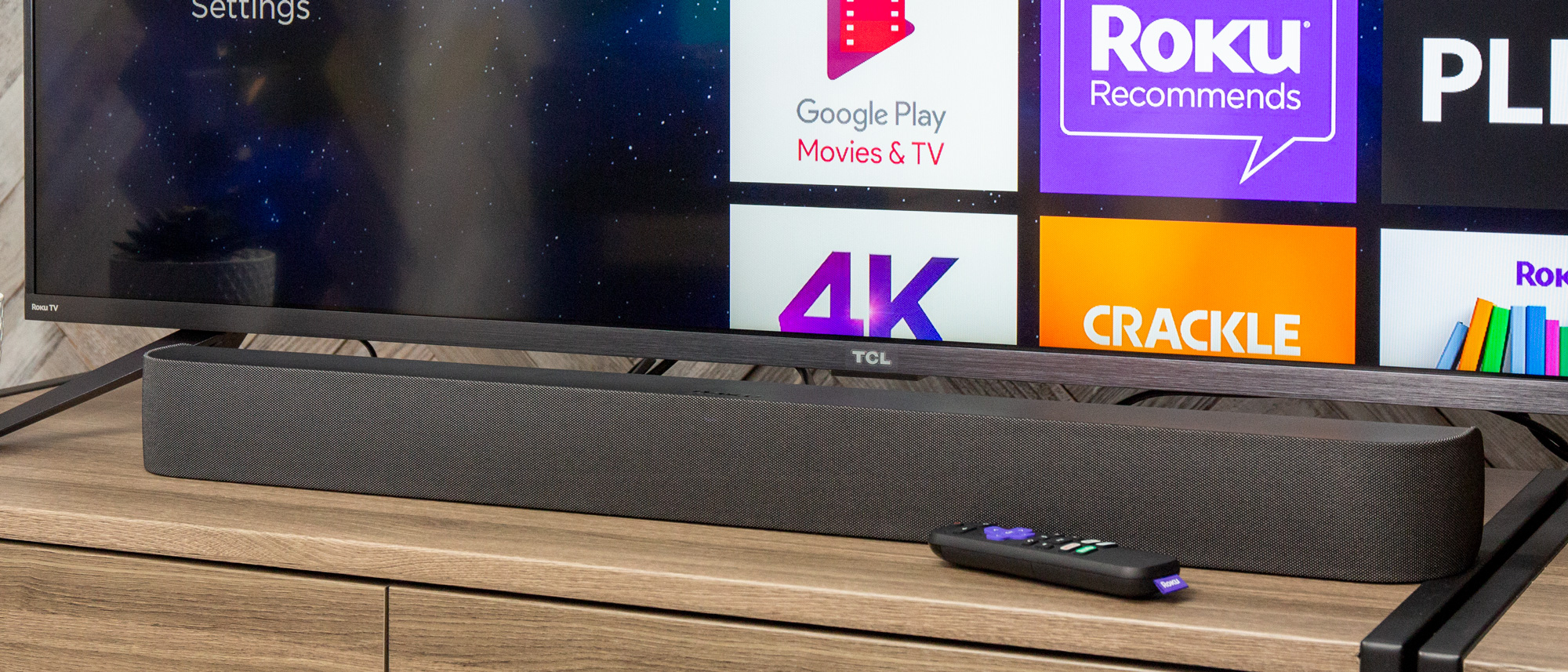Tom's Guide Verdict
If your TV lacks quality speakers and could use a few (thousand) more apps, the Roku Smart Soundbar is worth a look.
Pros
- +
Good sound quality
- +
Full Roku built in
- +
Easy setup
Cons
- -
Treble isn't a big step up
- -
Slow navigation
- -
Hard to gauge volume on non-Roku systems
Why you can trust Tom's Guide
Roku experimented with audio tech last year when the company came out with the $200 Roku TV Wireless Speakers. These accessories were a little expensive and had limited compatibility, but overall, they were pretty solid products, and it was only a matter of time until Roku expanded its offerings.
Enter the Roku Smart Soundbar ($180), a pricey peripheral that improves your TV's sound quality and doubles as a full-fledged Roku streaming box. To the device's credit, it does exactly what it sets out to do, giving users high-quality sound on top of the robust streaming experience that is Roku's signature.
And yet, the device has a few annoyances that are hard to get past. It's much slower and buggier than its Roku Ultra counterparts; its treble performance falls short of what the best soundbars offer, and it's not as good of a music peripheral as it could be.
But overall, I think the Roku Smart Soundbar charges roughly the right price for the experience it provides. If your TV lacks quality speakers and could use a few (thousand) more apps, the Roku Smart Soundbar is worth considering.
Roku smart soundbar design and setup
The Roku Smart Soundbar doesn't do much to challenge existing soundbar wisdom. The device is a gray, oblong apparatus, measuring 32.2 x 3.9 x 2.8 inches. It should fit comfortably in front of most large TVs, and at 5.5 pounds, it won't break your back when you're setting it up.
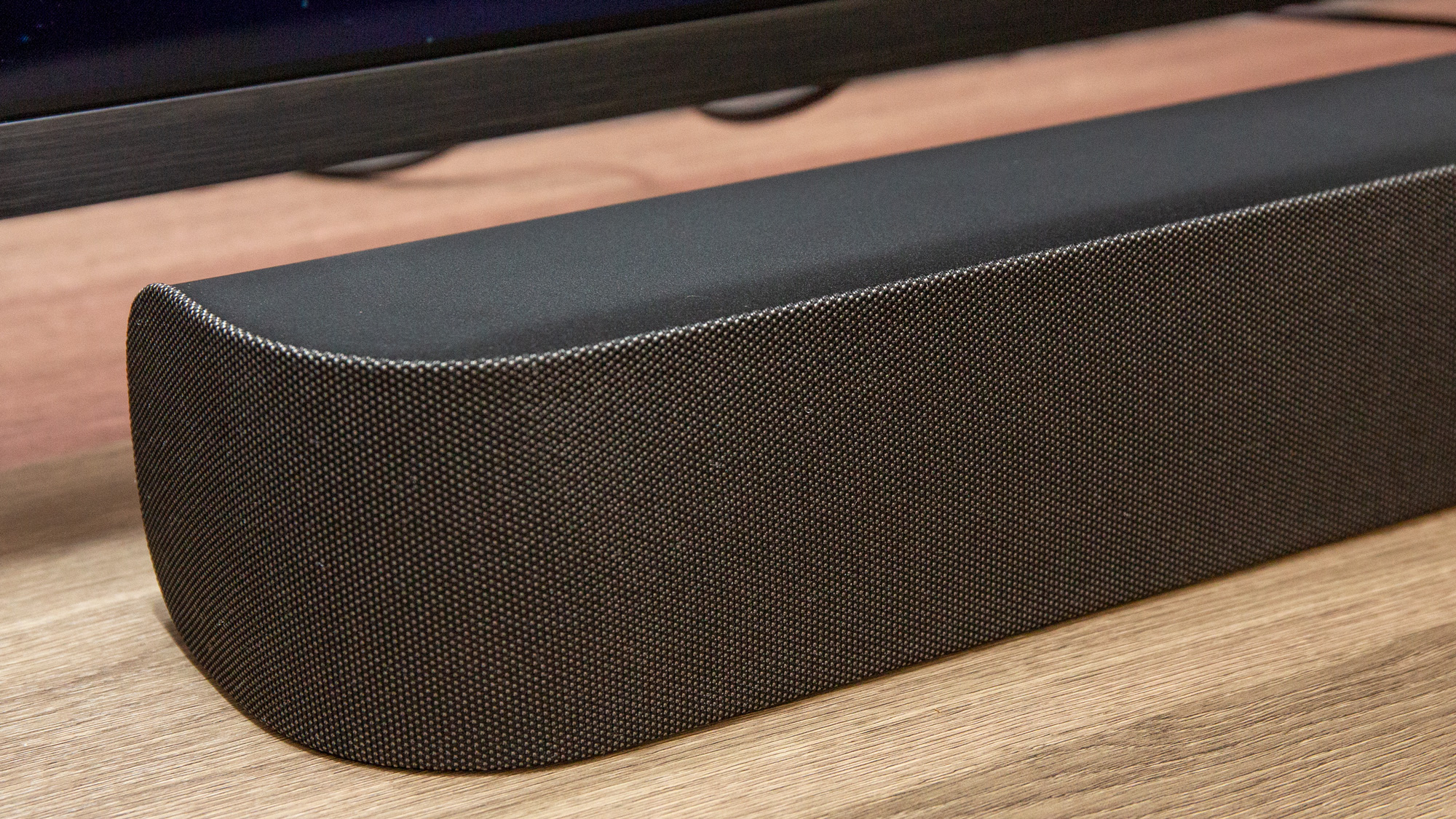
However, while the Roku Smart Soundbar isn't ostentatiously big, it can be tall enough to cause problems. I tested the device primarily with a Sony XBR-43X800E, and the soundbar came up just high enough to half-block the TV's remote-input sensor. Every time I wanted to switch inputs, access an options menu or tweak my screen options, I had to lift my remote up unnaturally high and angle it downward. This problem won't occur with every TV, of course, but just be aware of how you position the soundbar when you set it up.
Otherwise, it's hard to find anything to fault in the soundbar's design. On the front, there's an LED light that blinks in response to remote-control commands; on the back, there's a power port, an HDMI port, an optical audio port (useful for older TVs) and two holes for mounting brackets. The device feels solid and sturdy; an errant pet would have to work pretty hard to knock this soundbar down.
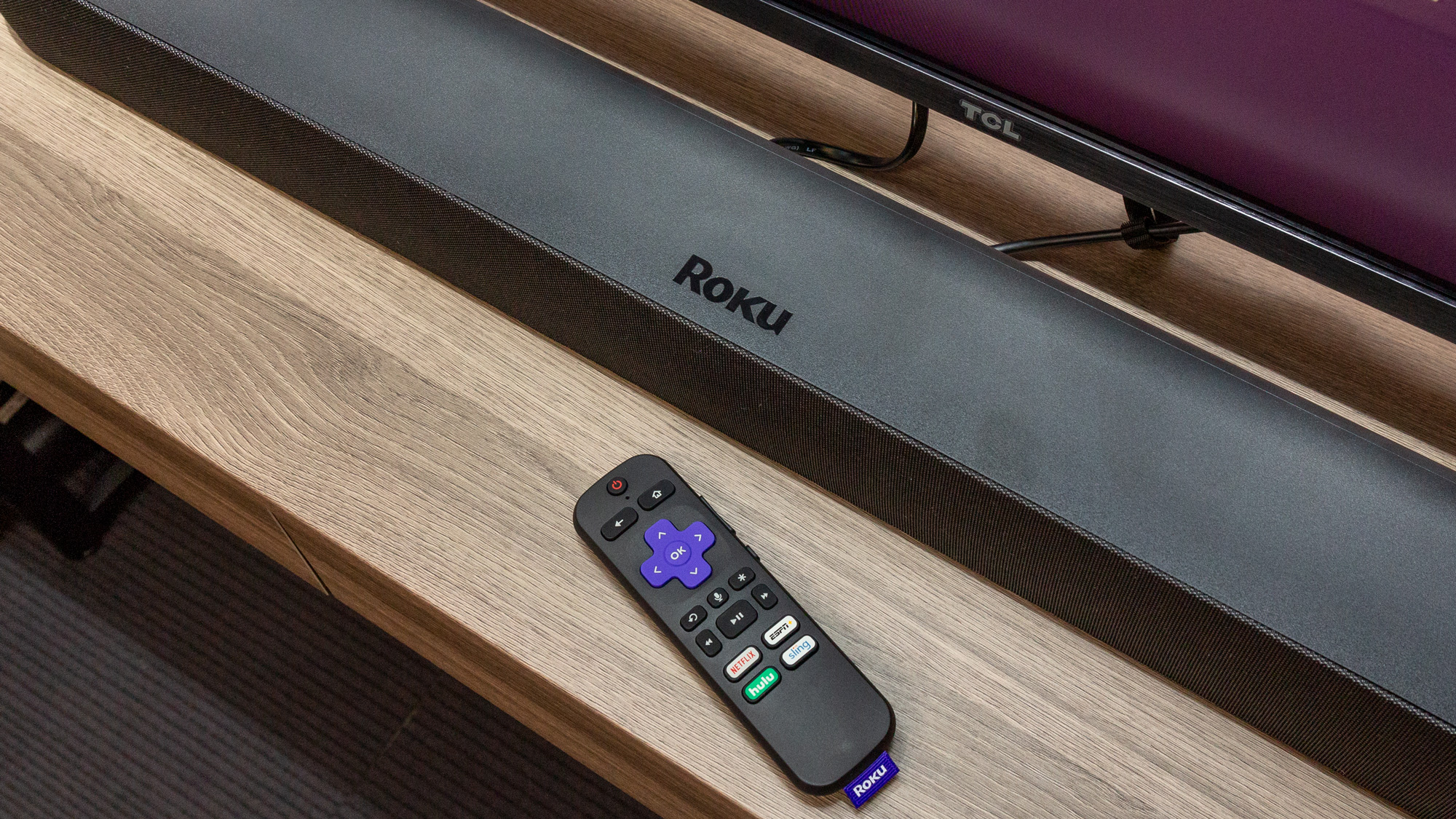
As for setup, it's pretty foolproof. You connect the soundbar via HDMI ARC port, then follow the instructions on screen. If you have an older TV without HDMI ARC technology, you can connect an (included) optical audio cable as well. The Roku recognizes the optical audio output automatically, although you may have to tweak a menu option on your TV somewhere to channel sound externally. (If you have a very old or very cheap TV that lacks both HDMI ARC and optical audio, do not buy the Roku Smart Soundbar; you will not be able to use it.)
One big advantage to note here is that while the Roku Wireless Speakers worked with only Roku TVs, the Roku Smart Soundbar should work with just about any TV produced in the last 10 years. The soundbar is also compatible with the Roku Wireless Subwoofer ($180, although you can buy the soundbar and the subwoofer together for $330 and save $30 overall). Tom's Guide has not tested the subwoofer yet but will have a full review coming soon.
Roku Smart Soundbar performance
The Roku Smart Soundbar is on the cheaper end of the soundbar spectrum. As such, you can expect it to provide better sound than your TV's built-in speakers but not the kind of audio you'd expect from a premium Samsung or Yamaha model . The soundscape feels balanced, and the device can get quite loud. You'll also have a few customization options at your disposal, although you won't be able to toy with EQ or any other true audiophile features.
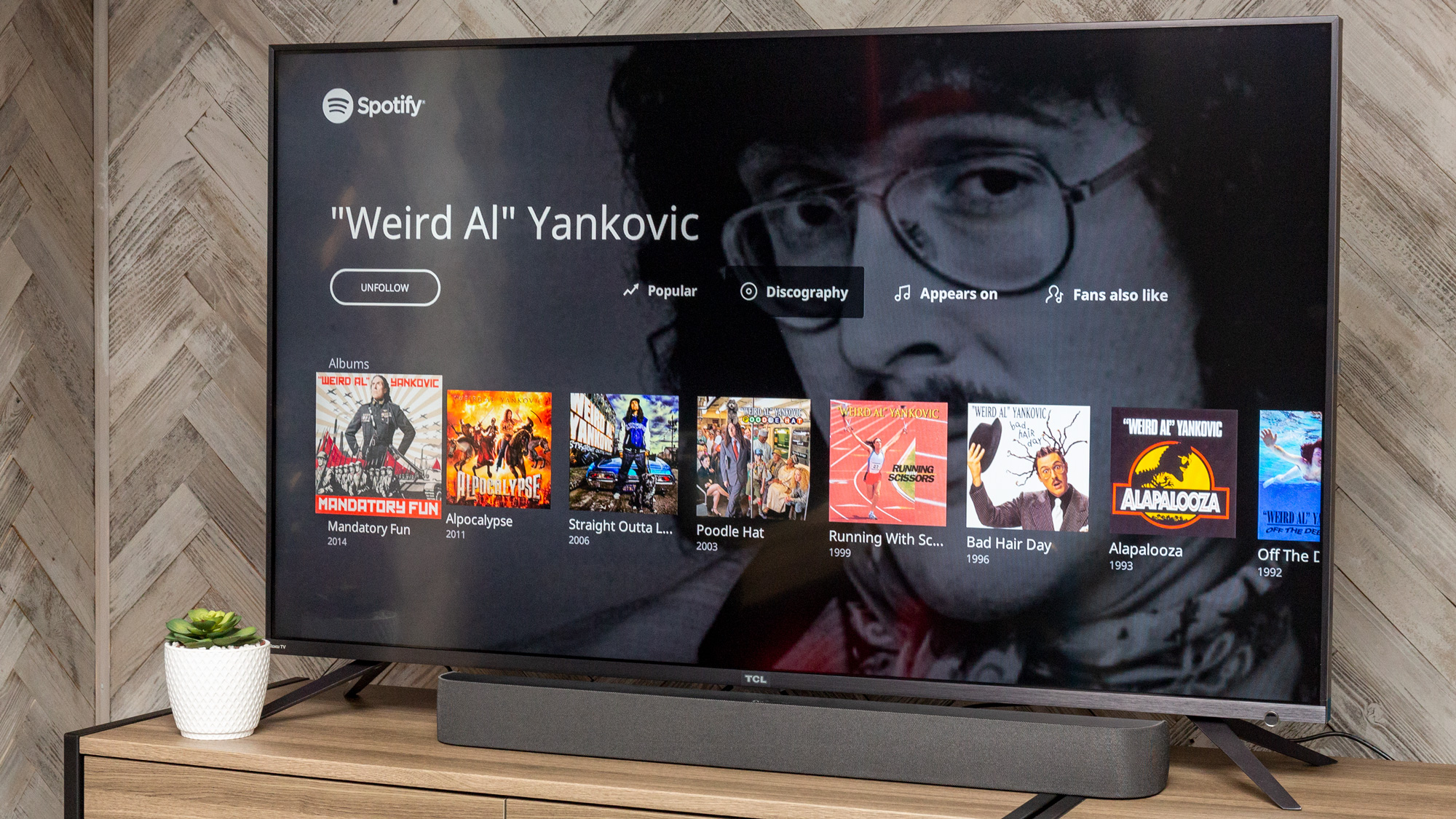
First and foremost, the Roku Smart Soundbar gave me much better bass than either my living room or bedroom TV (an old Samsung 1080p model and the aforementioned Sony, respectively). While watching Star Trek: Nemesis, I could hear the gentle hum of the Enterprise's engines during quiet scenes and the clear voices of the characters. The starship battle scenes boomed and crackled at all the appropriate moments, although I sometimes had to turn the volume up a little louder than I liked to catch all the dialogue during big, heated action scenes.
I was pleased to find that the soundbar did a good job carrying the roar of spaceship engines and pulsing gunshots, along with the myriad colorful conversations.
I also gave the Roku Smart Soundbar a shot with video games, like The Outer Worlds on PS4. I was pleased to find that the soundbar did a good job carrying the roar of spaceship engines and pulsing gunshots, along with the myriad colorful conversations. If your roommate or spouse doesn't mind listening to your game, this soundbar is a worthy alternative to a gaming headset.
The soundbar performed similarly well for sitcoms like BoJack Horseman, where bass is not quite as important and dialogue clarity is everything. For shows like this, I enjoyed toying around with the soundbar's various soundscape options. Like the Roku Wireless Speakers, this smart soundbar lets you activate Volume Leveling, Night Mode and Speech Clarity.
Volume Leveling limits the high and low range of sounds. This could prevent an errant commercial from blasting through your home after a nice, quiet scene in a drama, for example. Night Mode emphasizes dialogue and quieter sound effects while limiting the boom of explosions, gunshots and anything else that could wake up nearby sleepers. Speech Clarity puts dialogue first and foremost, to the detriment of anything else, which is useful in an hourlong drama but perhaps not the best choice for an action movie.
MORE: How to Use Roku - Tips, Tricks and Solutions
All three features work well, and activating and deactivating them is as simple as hitting a menu button. (You don't even have to pause what you're watching, which is a nice touch.) Each function involves something of a trade-off, so you won't want to have them active at all times, but it's easy enough to pick and choose.
The sound quality itself is not mind-blowing, but it's about right for the price. My only issue here is that while the bass added a lot to my viewing experience, I didn't think the treble and dialogue performance was all that much better than on a standard TV speaker. While it's true that flat-screen TV speakers are generally too small to be great, they have gotten a lot better in the past decade and generally don't have too much trouble delivering higher frequencies and dialogue. When I turned the soundbar off, I didn't notice a tremendous difference in any show or movie that relied primarily on dialogue. Bear this in mind if sitcoms and dramas tend to be your thing.
Roku Smart Soundbar interface and remote
One thing that sets the Roku Smart Soundbar apart from many of its competitors is that this device is also a full-fledged 4K HDR streaming box. It has a complete Roku system built in, complete with Roku's discrete OS and thousands of apps. (If I had to guess, I would say that this inclusion drives the price up a bit, so you may be able to get away with a cheaper soundbar if you already have a smart TV, streaming player or game console that you're happy with.)
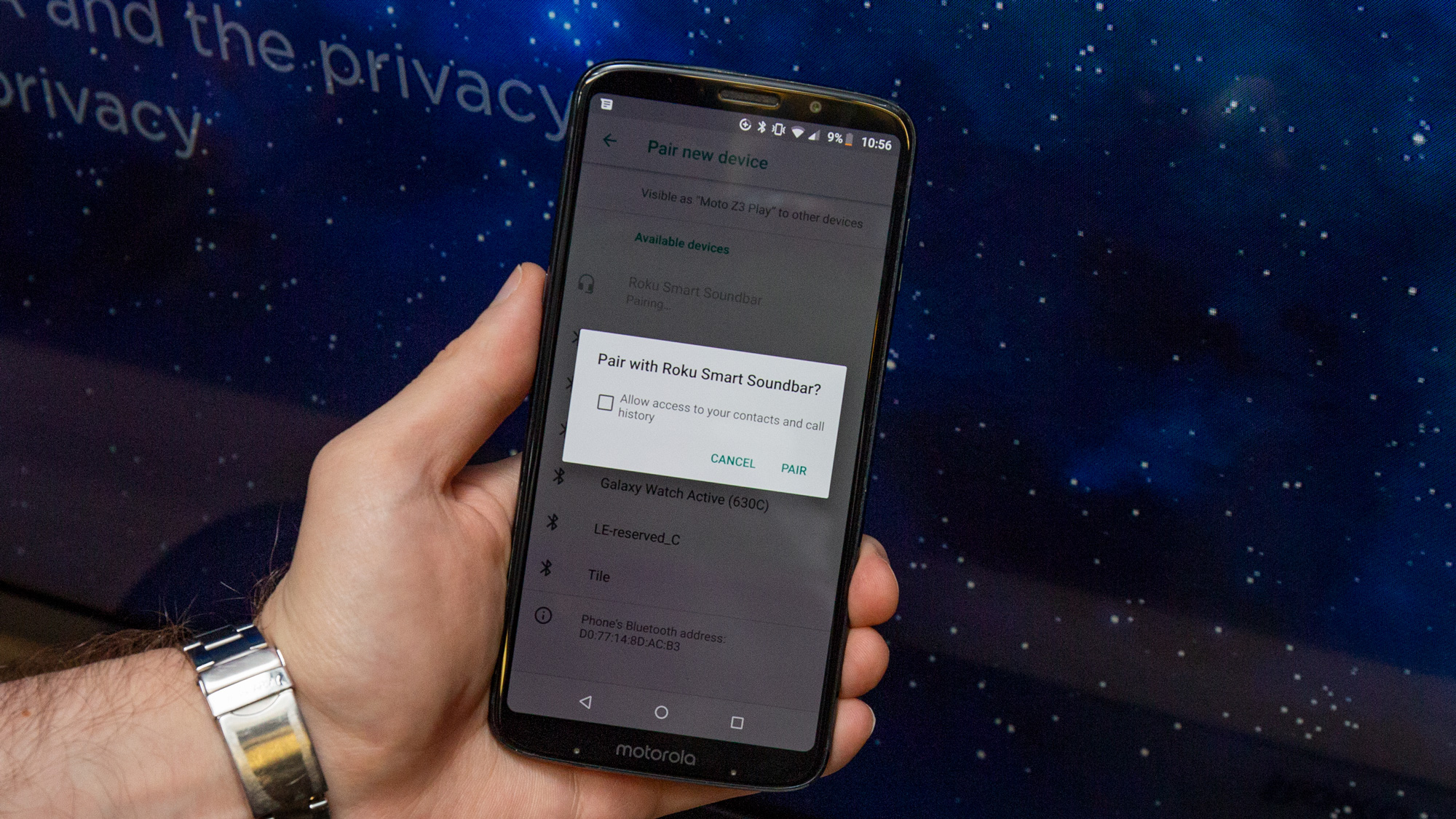
Roku is one of the better streaming-player OSes around. You can download thousands of apps (dubbed Roku Channels), including all the major players, such as Netflix, Hulu, Amazon Prime, Spotify, Pandora, HBO Go/Now, Sling TV, PlayStation Vue, Apple TV — the list goes on. There's also an excellent voice search and some useful bells and whistles (content price tracking, screen mirroring, etc.). From a content perspective, it's hard to beat.
From a performance perspective, the Roku Smart Soundbar is lacking.
From a performance perspective, though, the Roku Smart Soundbar is lacking. After I was wowed by the near-instantaneous startup and zippy navigation in the Roku Ultra and Roku Streaming Stick+ models, I was not quite prepared for the soundbar's startup time of 30-plus seconds, frequent lag during navigation, long load times for apps and occasional system crashes. Once the system is up and running, it's not too bad to get from one piece of content to the next. But there's a definite slowness to the proceedings, whether you're navigating menus or waiting for a video to load. Likewise, it can take quite a bit of time for the Roku Smart Soundbar to buffer UHD content, although this also depends heavily on which app you're using.
Then, there's the remote control, which works pretty well, even if it probably should have offered private listening, like other high-end Roku remotes do. It's got all the standard navigation buttons, as well as dedicated channel buttons for Netflix, Hulu, ESPN and Sling. It also has volume controls and a power button. (Be aware that the power button doesn't turn the soundbar on or off; in theory, it works with your TV itself. One of my TVs worked; the other didn't.)
- Best streaming services - Netflix vs. Hulu vs. Amazon
My only big complaint here is that when you're using the soundbar with non-Roku systems (an HD antenna or a PS4, for example), there's no way to see what the volume level is. The soundbar's LED blinks when you raise or lower the volume, but there's no numerical display. Even a voice that gives you a hint every five steps or so ("Volume Level 15," "Volume Level 20" and so forth) would be helpful. To set a precise level, you have to either go back to the Roku screen or listen extremely carefully.
You can also set the smart soundbar to play music from Pandora or Spotify, or a similar app, and let it run even after you've shut down the TV screen. You can achieve the same effect by connecting a phone via Bluetooth and playing your own music. The implementation of these features is a little clunky, but they both work and could help spice up a party or a fancy dinner.
Bottom line
The Roku Smart Soundbar doesn't offer a night-and-day difference over most standard TV speakers, but it's not a tremendously expensive gadget either. For $180, you get a 4K HDR streaming device with thousands of channels that can provide marginally better treble sound and much better bass sound than your TV offers by default. That seems about right.
For a similar price, you can get better sound from the $200 Yamaha YAS-108, but that soundbar doesn't include a built-in OS. Only you can decide whether you'd rather have more impressive sound or easy access to tons of streaming content.
- More: Everything you need to know about Roku surround sound
Marshall Honorof is a senior editor for Tom's Guide, overseeing the site's coverage of gaming hardware and software. He comes from a science writing background, having studied paleomammalogy, biological anthropology, and the history of science and technology. After hours, you can find him practicing taekwondo or doing deep dives on classic sci-fi.
